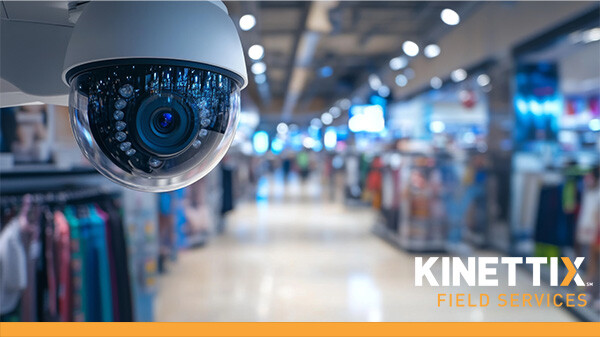Smart Buildings are Here
Imagine stepping into a building where every element is designed to enhance your experience, from the moment you walk through the door to the environment in which you work or shop. Welcome to the future of retail and office space: smart buildings. These advanced structures transform our everyday spaces by leveraging cutting-edge networks and interconnected systems. By integrating heating, ventilation, air conditioning (HVAC), security, and communication into a single, centralized platform, smart buildings achieve unparalleled operational efficiency, comfort, and sustainability.
Through the use of sensors, automation, and data analytics, these buildings monitor and control their functions in real time, optimizing energy use, reducing operational costs, and ensuring the utmost comfort and safety for their occupants. Imagine smart lighting systems that adjust brightness based on occupancy and natural light levels, or HVAC systems that maintain the perfect temperature by analyzing usage patterns and external weather conditions. The era of smart buildings is not just on the horizon—it's here, revolutionizing the way we interact with our built environment..
Low-voltage Cabling Is at the Core of Smart Buildings
But, if you peer a little deeper, how is it that these buildings operate? What is the system that unites all these components together? One of the top answers to these questions is low-voltage cabling. Low-voltage cabling in smart buildings is akin to the nervous system in the human body—essential for seamless communication and functionality.
These cables, which include Category 5 and 6, fiber optic, and other communication types, form the backbone of a smart building's infrastructure. They interconnect the various systems such as lighting, heating, ventilation, air conditioning (HVAC), security, and communication devices, enabling them to function cohesively. By transmitting data and power efficiently, low-voltage cabling ensures that every smart device and system within the building can communicate and operate effectively. This interconnectedness is crucial for real-time monitoring, automation, and data analytics, which are the hallmarks of smart building technology.
Challenges and Solutions in Low Voltage Cabling
The integration of low-voltage cabling in smart buildings presents both opportunities and challenges. One of the primary challenges is the complexity of designing and installing a cabling network that can support the vast array of interconnected devices and systems. Ensuring that these systems can communicate effectively requires meticulous planning and execution. Poorly designed or installed cabling can lead to data bottlenecks, signal interference, and other issues that can compromise the building's operational efficiency and performance. Additionally, as technology evolves, the cabling infrastructure must be adaptable to accommodate new advancements without requiring extensive overhauls.
To address these challenges, it's crucial to employ advanced cabling solutions and best practices. Utilizing high-quality cables such as Category 6 or fiber optics can mitigate issues related to data transmission speeds and signal integrity. Proper shielding and grounding techniques can reduce electromagnetic interference, ensuring reliable communication between devices.
Furthermore, adhering to industry standards and guidelines during the design and installation phases can prevent common pitfalls and future-proof the cabling infrastructure. Regular maintenance and testing are also essential to identify and rectify potential issues before they escalate. By implementing these solutions, smart buildings can achieve their goals of enhanced efficiency, sustainability, and occupant comfort.
Given the importance of low-voltage cabling in the functionality of smart buildings, the role of a skilled and experienced installer cannot be overstated. Companies like Kinettix specialize in providing top-tier low-voltage cabling installation services, ensuring that the cabling infrastructure is designed and implemented to the highest standards. Kinettix's expertise in handling complex cabling projects ensures that all systems within a smart building are seamlessly integrated and function optimally. . By choosing a reputable installer like Kinettix, building owners and managers can rest assured that their smart building's nerve center is in capable hands, paving the way for a future of efficient, sustainable, and intelligent operations.
The Future of Low Voltage Cabling in Smart Buildings
The future of low-voltage cabling in smart buildings looks promising, with advancements in technology driving increased demand for efficient and reliable cabling solutions. Innovations such as Power over Ethernet (PoE) are transforming the way low voltage systems are designed and installed, allowing for the simultaneous transmission of data and power over a single cable.
As the Internet of Things (IoT) continues to expand, the need for robust low-voltage cabling solutions will become even more critical. Smart buildings will increasingly rely on interconnected devices and systems to optimize performance and enhance the user experience. Low-voltage cabling will play a vital role in supporting these advancements and ensuring that smart buildings remain at the forefront of technological innovation.
Looking Ahead
As smart buildings continue to evolve, the demand for robust low-voltage cabling infrastructure will grow, supporting advancements in artificial intelligence, machine learning, and data analytics to further enhance building automation and management. The future potential of smart buildings is immense, with possibilities such as predictive maintenance, enhanced energy management, and improved occupant experiences through personalized environments.





